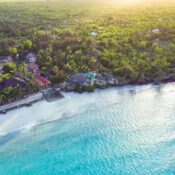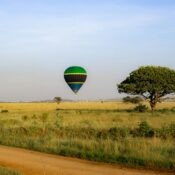Best Time to Visit Tanzania for a Safari

Best Time to Visit Tanzania for a Safari
Tanzania is a year-round safari destination, offering breathtaking wildlife encounters, stunning landscapes, and diverse ecosystems. However, depending on your preferences whether it’s witnessing the Great Migration, enjoying fewer crowds, or photographing lush scenery timing your safari just right can elevate your experience to the next level.
At Mtila Safaris, we help you plan your trip during the season that best matches your interests, budget, and expectations. Here’s a guide to understanding the best times to visit Tanzania for an unforgettable safari.
Understanding Tanzania’s Safari Seasons
Tanzania experiences two main seasons:
- Dry Season (June to October)
- Green/Wet Season (November to May)
Each has its unique charm and advantages.
The Dry Season (June – October)
Peak Safari Season – Ideal for Wildlife Viewing
Highlights:
- Excellent visibility of animals as vegetation is sparse
- Animals gather around water sources, making them easier to spot
- Little to no rain, clear skies, and cooler temperatures
- Prime time for the Great Migration river crossings (July–September)
Best Parks to Visit:
- Serengeti National Park – For the Great Migration and predators
- Ngorongoro Crater – Dense wildlife and easy viewing
- Tarangire National Park – Large elephant herds near the river
- Ruaha & Nyerere (Selous) – Dry conditions, great predator sightings
Ideal For:
- First-time safari travelers
- Wildlife photographers
- Families and groups
Travel Tip:
Book early—accommodation and park entries can be in high demand during this period.
The Green Season (November – May)
Lush Landscapes, Fewer Tourists, and Great Value
The green season brings life to Tanzania’s landscapes with dramatic skies, vibrant greenery, and newborn wildlife.
Short Rains (November – December):
- Afternoon showers with plenty of sunshine
- Parks are still accessible and game viewing is good
- The start of the Great Migration calving season
Long Rains (March – May):
- Heavier rains, especially in April
- Some roads may become impassable in remote areas
- Fewer tourists and significant discounts on lodges and tours
Highlights:
- Calving season in southern Serengeti (January – March)
- Stunning scenery and rich birdlife
- Lower prices and more exclusive experiences
Best Parks to Visit:
- Ndutu (Southern Serengeti) – For wildebeest calving and predators
- Lake Manyara – Rich vegetation, birdwatching
- Tarangire & Ngorongoro – Still accessible and rewarding
Ideal For:
- Budget-conscious travelers
- Birdwatchers and nature photographers
- Repeat visitors looking for a different safari experience
Travel Tip:
Pack a light rain jacket and waterproof boots if traveling during the rains.
Month-by-Month Safari Highlights
| Month | Safari Highlights |
|---|---|
| January – March | Calving season in Ndutu; predators active; green and scenic |
| April – May | Fewer tourists, discounted rates; rainy season at peak |
| June | Start of dry season; clear skies; wildlife gathering near water |
| July – August | Great Migration river crossings begin; ideal weather |
| September – October | Peak wildlife viewing; excellent visibility |
| November – December | Start of short rains; lush scenery and fewer crowds |
So, When Should You Go?
The best time for most travelers is the dry season (June to October)—offering classic safari conditions and the best chances to see a wide range of animals. However, the green season offers incredible rewards for those seeking fewer crowds, lower rates, and unique experiences like the calving of wildebeest.
At Mtila Safaris, we design personalized safari itineraries based on the time of year and your goals—whether it’s watching river crossings in the Serengeti or soaking in the emerald beauty of the wet season.
Ready to Plan Your Safari?
Contact Mtila Safaris today to start building your dream safari based on the best travel window for your adventure. Our local team is ready to guide you through every step from choosing the right parks to picking the perfect lodge.





